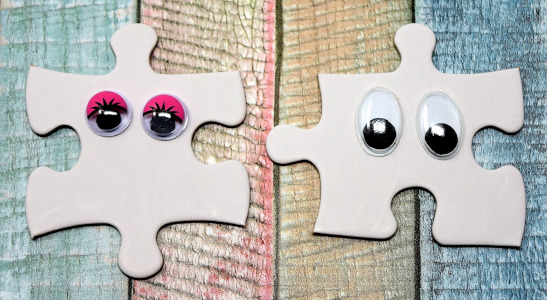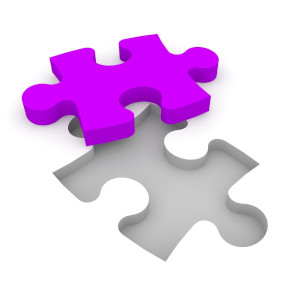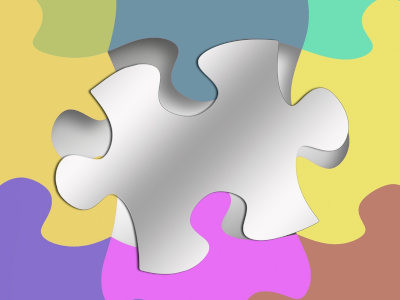To improve your speed puzzling times, puzzle players focus on efficiency when sorting jigsaw puzzle pieces, defining strategic jigsaw puzzle piece placement when looking at the puzzle design and focus on maintaining a very calm mind and create the center of attention on puzzles. It’s essential to practice regularly, and try different jigsaw puzzle styles with a goal to build familiarity and expectations of diverse images and jigsaw piece shapes.
Welcome to the fascinating world of Speed Puzzling!
It’s a place where quick thinking, sharp eyes, and nimble fingers converge for an exhilarating puzzle-solving experience! Looking to learn more? Our speed puzzling tips and strategies list will help you excel in puzzle competitions as you grow as a master puzzler.

Whether you’re a seasoned speed puzzler or a curious novice, this of 72 Speed Puzzling Tips & Strategies can help you. Get ready to embark on a journey that combines the thrill of racing against the clock with the satisfaction of completing intricate jigsaw puzzles in record time. And have a look at what you can do to better your skills in a speed puzzle competition.
In the realm of Speed Puzzling, every second counts, and our friendly list is here to equip you with the best tips and strategies to sharpen your skills. From assembling the easiest sections first to mastering the art of pattern recognition, we’ve got you covered. Join us as we explore the exciting realm where puzzle pieces click into place like clockwork, and the joy of triumphing over a challenging puzzle is only surpassed by the thrill of doing it lightning-fast.
Table of Contents
Speed Puzzling Tips is How to Build Your Play
Whether you’re a solo speed puzzler seeking personal records or part of a dynamic team collaborating on a puzzle masterpiece, this list of speed puzzling tips and strategies can help. You need to build your play and focus on how puzzle pieces can be put into place faster.

As a speed puzzler (who loves speed puzzling) this friendly list might be the one thing that gives you, insights, and strategies for your next game. It’s time to elevate your speed puzzling game and infuse a sense of joy and camaraderie into every piece-fitting adventure. Even if you only find a handful of Speed Puzzling Tips and Strategies you can use on this list, it’s going to help your speed.
Let’s dive into the puzzle-solving universe together and uncover the secrets to becoming a speed puzzling maestro! It’s time to discover the big list of speed puzzling tips and strategies.
75 Speed Puzzling Tips and Strategies
- Prioritize corners to create a solid starting point.
- Sort edge pieces first to establish the puzzle framework.
- Group pieces by color, pattern, and distinct features.
- Divide the puzzle into manageable sections for focused solving.
- Begin with sections that have clear patterns or colors.
- Utilize puzzle trays or containers for efficient piece organization.
- Rotate the puzzle frequently to gain different perspectives.
- Work on large, obvious sections before intricate details.
- Use the puzzle box image as a reference for piece placement.
- Employ trial and error to find the correct connections.
- Identify and prioritize key pieces that anchor larger sections.
- Stay patient and persistent throughout the solving process.
- Take short breaks to prevent mental fatigue.
- Multitask by working on different sections simultaneously.
- Celebrate small achievements and completed sections.
- Practice with puzzles of various sizes and complexities.
- Develop a system for efficient piece retrieval.
- Use your peripheral vision to monitor multiple sections at once.
- Establish a rhythm in your movements for consistent speed.
- Practice mindfulness to stay focused on the task at hand.
- Collaborate effectively if participating in team competitions.
- Develop quick decision-making skills for time-sensitive situations.
- Familiarize yourself with common puzzle piece shapes.
- Use quick glances to identify potential matches.
- Strategically place pieces in temporary positions to free up space.
- Train your memory to recall piece locations.
- Stay aware of the time remaining and adjust your pace accordingly.
- Participate in mock competitions to simulate real event conditions.
- Practice assembling puzzles with irregular shapes.
- Minimize unnecessary hand movements for increased efficiency.
- Experiment with different starting points within the puzzle.
- Use a timer during practice sessions to track your progress.
- Develop a system for communicating with teammates in team events.
- Optimize your workspace for easy access to pieces.
- Enhance your spatial awareness to visualize connections quickly.
- Practice assembling puzzles without referring to the box image.
- Strengthen your hand-eye coordination for faster movements.
- Challenge yourself with puzzles that have similar colors or patterns.
- Learn from experienced speed puzzlers and observe their techniques.
- Focus on improving specific skills during each practice session.
- Develop a mental checklist for systematic puzzle-solving.
- Practice assembling puzzles under time constraints to build resilience.
- Analyze your performance after each practice session for areas of improvement.
- Adjust the level of difficulty based on your skill progression.
- Utilize a systematic approach to solve different types of puzzles.
- Engage in speed puzzling events regularly to build competition experience.
- Set realistic goals for completion time and work towards achieving them.
- Vary your practice environment to adapt to different competition conditions.
- Focus on maintaining a steady pace throughout the entire puzzle-solving process.
- Enjoy the process and stay enthusiastic about the challenges presented in each puzzle.
- Develop a quick scanning technique to identify pieces efficiently.
- Master the art of connecting pieces without looking directly at the puzzle.
- Experiment with solving puzzles upside down for an added challenge.
- Train yourself to work well under pressure to handle time constraints effectively.
- Use a magnifying glass for intricate details in challenging puzzles.
- Familiarize yourself with puzzle brands to understand piece shapes and patterns.
- Create mnemonic devices to remember piece locations.
- Practice assembling puzzles with unconventional piece shapes for adaptability.
- Strengthen your hand muscles to improve dexterity and speed.
- Study the puzzle image before starting to strategize your approach.
- Develop a systematic method for tackling each puzzle section.
- Improve your concentration by solving puzzles in a quiet environment.
- Rotate pieces with precision to reduce the chances of misplacement.
- Use your fingers to feel for piece shapes without looking directly at them.
- Train your eyes to quickly adjust to different lighting conditions.
- Develop a mental map of the puzzle to minimize searching time.
- Experiment with assembling puzzles in varying positions (standing, sitting, etc.).
- Challenge yourself with puzzles that have irregular edges.
- Practice assembling puzzles with minimal color variation for heightened difficulty.
- Strategically use the edges of the puzzle as reference points.
- Incorporate physical exercises, such as stretching, to maintain flexibility during competitions.
- Train your mind to switch between visual and spatial thinking rapidly.
- Strategically tackle challenging sections early in the competition.
- Familiarize yourself with the dimensions of common puzzle piece shapes.
- Cultivate adaptability by practicing with puzzles of different piece materials (wood, cardboard, etc.).

How To Find Your Best Speed Puzzling Time
Speed Puzzling is not for everyone. Playing against a clock means finding your best speed. Considering all the speed puzzling tips above, you might find the only way to better your speed puzzling time is to practice. It exercises your mind and allows you to focus on your best efforts. This practice can be done with new puzzles, puzzles from thrift stores and even for fun when you meet up with other puzzle enthusiasts.
Speed Puzzling is ALL About Fun
When you look at the long list of Speed Puzzling Tips and Strategies you realize that even if a few of these tips will help, it’s possible you could shave off seconds. Add a little practice and focus and you might really have a competitive spirit. While my list of speed puzzling tips and strategies took me a while to compose, it’s definitely helped my play! As for me, when I see all the speed puzzling tips and strategies it reminds me just how long I’ve loved to be part of speed puzzling.
